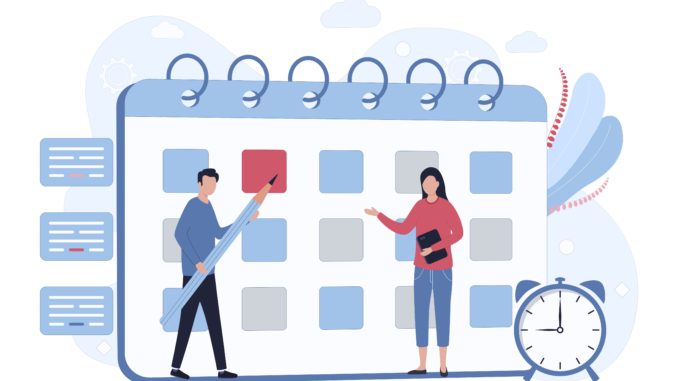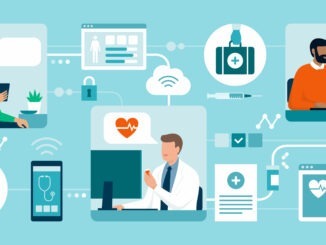
During 2021 many improvements are planned to improve the quality of general practice appointment data
NHS Digital has been collecting data from general practice appointment systems, and publishing it, collated by CCG area, since 2018. This published data provides a picture of general practice appointments; it includes details such as the number of appointments, the healthcare professional carrying them out, and where possible, the mode of delivery, e.g., face-to-face, or telephone. This is all brought together under the heading of general practice appointment data or GPAD.
Why is improvement needed now?
During the COVID-19 emergency practices have had to rapidly change their working patterns. This has highlighted that not all clinical interactions with patients are recorded in the appointment book. This may result in an under-recording of the activity taking place in practices and this, in turn, may lead to under-reporting in the NHS Digital GPAD data publication.
This is, potentially, giving a false picture of overall activity and workload in general practice. It is in all our interests to capture accurately the full scale of scale of activity that general practice is providing for patients.
Practice
Different models of working are being embedded in many general practices. Accurate appointment data demonstrates the changes in activity and workload, and supports practices to:
• understand their own practice activity and workload across the month and during the year;
• identify pressure points that need mitigating for the benefit of staff and patients;
• plan the deployment of extra and existing staff, as general practice undertakes its biggest ever workforce expansion.
Locality
Accurate data are key for local decision-making and workforce planning across the local health system to:
• help inform and understand demand and pressures in general practice as well as in hospitals;
• identify areas which do not have enough clinical resources, and inform service planning, including new services and new service models;
• understand the use of Additional Roles and Reimbursement Scheme (ARRS) roles to ensure optimum take up and utilisation across practices;
• calculate likely workload if a practice has to temporarily close for any reason, such as flood, fire, utility failure, sickness or COVID-19.
Nationally
Accurate GP appointment data helps to:
• better show the sheer scale of what general practice does for us all;
• demonstrate, and make the case for, extra investment in general practice;
• give insight into different ways of working, and variation across the country.
General practice should record all appointments in their appointment book
What constitutes an actual appointment is not as well-defined and well-understood as it could be by all the different health and care professionals involved in providing general practice. To ensure consistency in counting actual appointments, the following definition has been agreed; ‘Discrete interactions between a health or care professional and a patient, or a patient’s representative’. This definition excludes:
1. Purely administrative interactions between practice staff and patients – e.g. practice manager meeting a patient to complete a subject access request, or a receptionist answering a query about opening hours.
2. Non-clinical triage or administrative signposting.
3. Online requests that do not result in an interaction between the patient and a health or care professional – for example automated online triage.
4. Work undertaken by a health or care professional that doesn’t involve patient contact – e.g., multi-disciplinary team meetings, case conferences, palliative care list reviews, referral letters, writing repeat prescriptions, reviewing results.
5. All clinical administration activity including audit, training, supervision.
6. Interactions with patient participation reference groups.
This guidance reconfirms that the definition of an appointment includes:
1. All relevant staff. Discrete interactions carried out by any health or care professional, including all roles in the ARRS.
2. All modes. Discrete interactions that are delivered by all modes – face-to-face, by telephone, via video and online.
3. All settings. Discrete interactions in any primary medical care setting (including the practice, patient’s home, community, care home, group consultations, local GP extended access hub). Work is continuing to ensure activity in extended access hubs can be accurately recorded and identified in the collection.
As has always been the case, Did Not Attend (DNA) appointments should continue to be recorded.
General practice should record appointments conducted by all health and care professionals
Since the introduction of the Network Directed Enhanced Service (DES) Additional Roles Reimbursement Scheme (ARRS) NHS England and Improvement is aware that some appointments conducted by the wider workforce are not yet being recorded in appointment books. To ensure that all appointments are being captured, practices should check that appointments delivered for the practice by all health and care professional groups (including trainees) are being recorded.
In particular, practices should check that all appointments delivered by social prescribing link workers are being recorded (as well as more accurately recording the number of link workers in the workforce dataset). Health and care professionals are:
• General practitioners.
• Practice nurses.
• Health care assistants.
• Social prescribing link workers.
• Physician associates.
• First contact practitioners.
• Community paramedics.
• Pharmacists.
• Pharmacist technicians.
• Health and wellbeing coaches.
• Care co-ordinators.
• Occupational therapists.
• Dieticians.
• Podiatrists.
• All other registered clinical professionals.
What should, and should not, be captured in the appointment book?
Examples of single appointments
• Where a consultation mode changes during the interaction with the patient (e.g., a telephone consultation changes to video during the consultation), this will count as a single appointment.
• Where a patient query/electronic consultation comes into the practice, is reviewed by a health or care professional, and is closed by a message exchange with the patient, this will count as a single appointment.
• Where a health or care professional proactively contacts a patient to discuss an issue – e.g., after reviewing their results, or to pro-actively check-in with a vulnerable patient- this will count as a single appointment.
Example of multiple appointments with the same patient
• Where a patient query/electronic consultation comes into the practice and is reviewed by a health or care professional (e.g., the duty doctor) who then refers it to a health or care professional for action at a later time e.g., a telephone call to the patient. Taken together, these will be counted as two appointments.
Examples of appointments with multiple patients
• If practices are working off a block or list of appointment activity with multiple patients- including, for example, care home consultations as part of care home rounds, home visits or group appointments – each patient should be counted as a single appointment. So, if there were six patients in a group appointment, this should be recorded as six appointments.
• If a duty health or care professional is carrying out ‘instant’ assessments/triage when patients call, each patient who is transferred for an assessment should be given a dedicated slot in the appointment list; this can be in an untimed list if the practice is using one.
• If a practice is using untimed lists for which more than one patient can be added – for example, triage lists – then, when each patient is provided with an untimed appointment, each patient should be provided with an individual appointment slot on the untimed list.


Be the first to comment